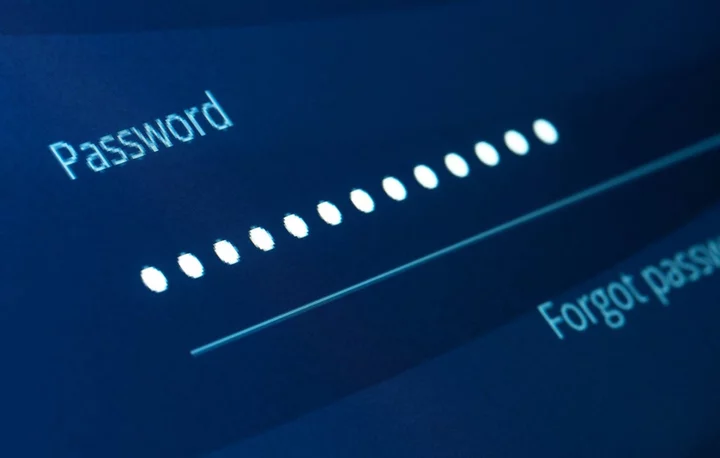
What is Rumble? The alternative streaming site that has signed Kai Cenat and iShowSpeed
Rumble, a streaming platform created to ‘protect free and open internet’ in response to cancel culture, has grown exponentially in recent months, signing exclusive deals with creators and streamers such as Russell Brand and Andrew Tate. It's most recent deal to be reached is with Kai Cenat and IShowSpeed. The pair signed to Rumble to produce a handful of exclusive livestreams a month. Whilst the pair will still stream on YouTube and Twitch, the signing with Rumble comes after both streamers have faced numerous bans from YouTube and Twitch for content violations. Speed is currently facing a permanent ban on Twitch for ‘spam or deceptive practices’, despite Cenat trying to negotiate with Twitch to unban him. Cenat, who himself has faced bans from both Twitch and YouTube, has threatened to leave Twitch permanently if faced with another ban. The first exclusive live stream show will premiere on May 26, named The Kai ‘n Speed Show. The creators say they’re grateful to have full creative control on this new platform. Sign up to our free Indy100 weekly newsletter Cenat is the fourth most subscribed Twitch streamer, with 5.2 million followers. Speed boasts 16 million subscribers on YouTube. The pair recently collaborated on a song together titled Dogs. The exclusive show follows a string of deals made between Rumble and creators. In September 2022, Rumble announced an exclusive show with Russell Brand after Brand claimed he was being ‘censored’ on YouTube for spreading Covid misinformation. During the announcement, Rumble CEO Chris Pavlovski told users “Russell is known for his unfiltered opinions, and we are proud to serve as the technology platform where he can grow his audience.” Similarly, in late 2022, Rumble signed a $9 million deal with Andrew Tate after he was banned on both TikTok and YouTube. As a result of this long line of deals with controversial creators, Rumble has subsequently been associated for being a place for outspoken creators to flock to when they get banned from mainstream platforms. Have your say in our news democracy. Click the upvote icon at the top of the page to help raise this article through the indy100 rankings.
2023-05-17 20:52

Cresco Labs Launches First-Ever Cannabis Advertisements on Spotify, the World’s Most Popular Audio Streaming Subscription Service
CHICAGO--(BUSINESS WIRE)--Sep 7, 2023--
2023-09-07 19:48

Google is about to ditch passwords forever
Google has announced that its apps and services will now be “passwordless by default” in an effort to make all users switch to passkeys. The move is part of a broader consensus among the tech industry to ditch passwords, which have been around since the 1960s, and switch to a safer and more efficient format to verify a person’s identity. Passkeys combine a code with biometric information like a fingerprint or facial recognition, making them easier to remember and harder to be stolen. Google apps like YouTube, Search and Maps all support the new format after it was first introduced earlier this year, though take up has been slower than expected. The tech giant said the push to get users to adopt passkeys coincided with Cybersecurity Awareness Month, claiming that the new technology is faster and more secure. “They are 40 per cent faster than passwords – and rely on a type of cryptography that makes them more secure,” Google product managers Sriram Karra and Christiaan Brand wrote in a blog post explaining the move. “We’ll continue encouraging the industry to make the pivot to passkeys – making passwords a rarity, and eventually obsolete.” Google users who do not already use passkeys will receive a prompt to set one up the next time they sign into their account. Passkeys have already been enabled by other online platforms, including eBay and Uber, as the tech industry looks to completely transition away from traditional passwords. “We’ve seen great results from launching passkeys across our apps and encourage all users to adopt passkeys,” said Ramsin Betyyousef, a senior director of engineering at Uber. “Ultimately this is a win-win for Uber and Uber’s customers.” Google, which counts billions of users across all of its platforms, acknowledged that “new technologies take time to catch on”, and have therefore given people the option to temporarily opt out of passkeys and use passwords wherever possible. The company did not set a date for when passwords will be phased out entirely, but some security experts contend that their death is inevitable while hackers continue to exploit their vulnerability. Helping implement the transition is the FIDO (Fast Identity Online) Alliance, which has been working with Apple, Google, Microsoft and hundreds of tech companies to develop the new login standard. “The complete shift to a passwordless world will begin with consumers making it a natural part of their lives,” said Alex Simons, who heads Microsof’s Identity Program Management team. “By working together as a community across platforms, we can at last achieve this vision and make significant progress toward eliminating passwords.” Read More Pixel 8: Google unveils ‘AI-centred’ iPhone rival Google to trial AI in UK traffic light systems to reduce stop-and-go emissions Pixel 8: Google unveils DeepMind-powered iPhone rival China’s discovery of never-before-seen ore could propel battery technology
2023-10-11 18:21

Eat Less Meat Is Message for Rich World in Food’s First Net Zero Plan
The world’s most-developed nations will be told to curb their excessive appetite for meat as part of the
2023-11-26 09:27

Kick streamer xQc cleared of sexual assault allegations amid reconciliation rumors with ex Adept
The couple who had been 'informally married' filed for a divorce in 2022 and months later Adept filed for a Protective Order
2023-09-01 13:46

Accenture Federal Services Wins Position on IRS Blanket Purchase Agreement with $2.6B Ceiling Value
ARLINGTON, Va.--(BUSINESS WIRE)--May 24, 2023--
2023-05-24 21:18

New NTT Joint Venture Using AI and IoT to Advance Sustainable Food Security Worldwide
TOKYO--(BUSINESS WIRE)--Jul 11, 2023--
2023-07-11 20:20

Cut down on costs and e-waste with a refurbished iPad Air, only $180
TL;DR: As of July 8, get this refurbished iPad Air with 32GB storage and a
2023-07-08 17:53

JFrog Software Supply Chain Platform Delivers 393% ROI According to Total Economic Impact Study
SUNNYVALE, Calif.--(BUSINESS WIRE)--May 24, 2023--
2023-05-24 21:16

Europe’s Enforcer Wants Big Tech to Play by His Rules
Thierry Breton was visibly pleased after meeting with Mark Zuckerberg. The 68-year-old Frenchman was suppressing a smile, his
2023-09-12 12:59

Australia plans huge fines if big tech fails to tackle disinformation
Tech giants could face billions of dollars in fines for failing to tackle disinformation under proposed Australian laws, which a watchdog on Monday said would bring...
2023-06-26 14:51

Why is Bella Hadid measurement trend being considered 'toxic' on TikTok?
It’s no secret that the beauty industry is responsible for setting unrealistic standards; find out why
2023-05-25 16:46
You Might Like...

Private equity firm Veritas makes takeover offer for BlackBerry -source

ChatGPT creator says AI ‘superintelligence’ is impossible to stop

Quadrant Report Ranks Swimlane the Leader in Security Automation with Highest Tech Excellence Rating

Supreme Court could soon rule on Biden's student loan forgiveness program. Here's what borrowers need to know

China Digs In on Ukraine and Climate Even in Xi’s G-20 Absence

Italy ties China's hands at Pirelli over fears about chip technology

Applause Announces Danielle Lee as New Board of Directors Member

Adin Ross mocked for Fortnite performance despite victory, Internet labels him 'worst player'
